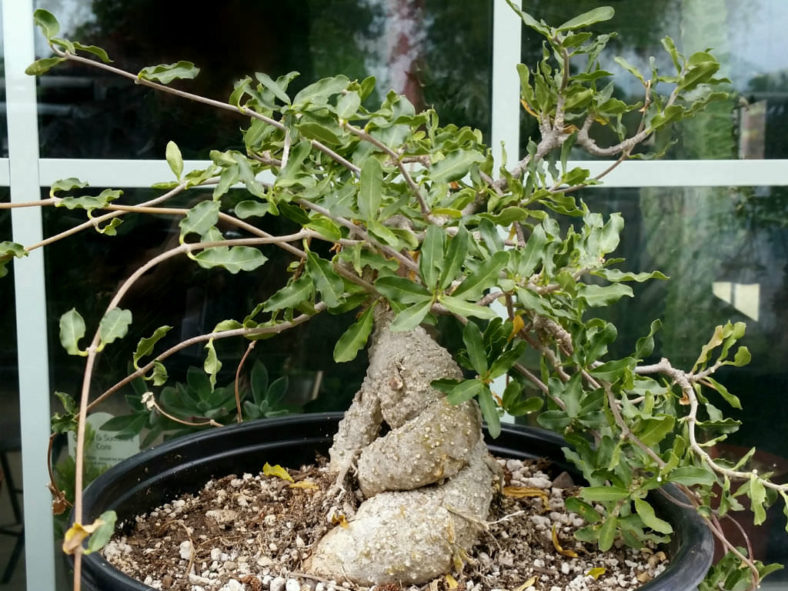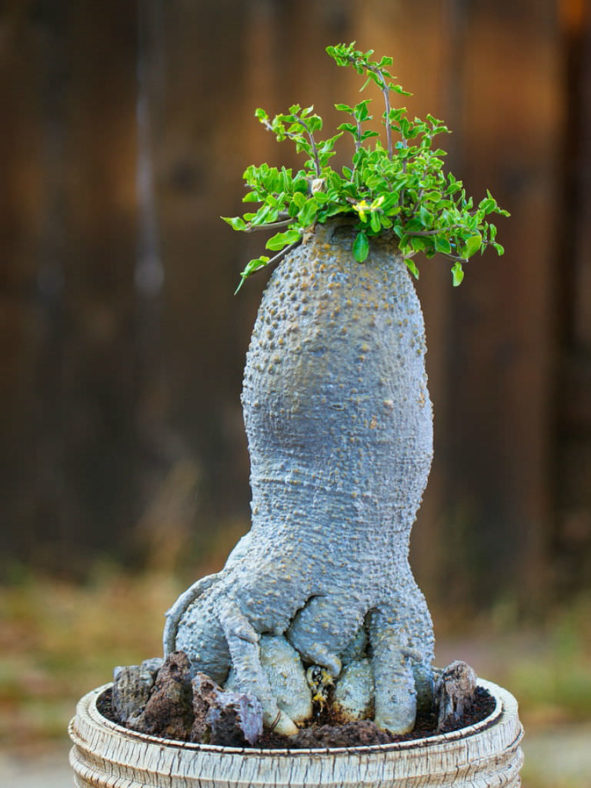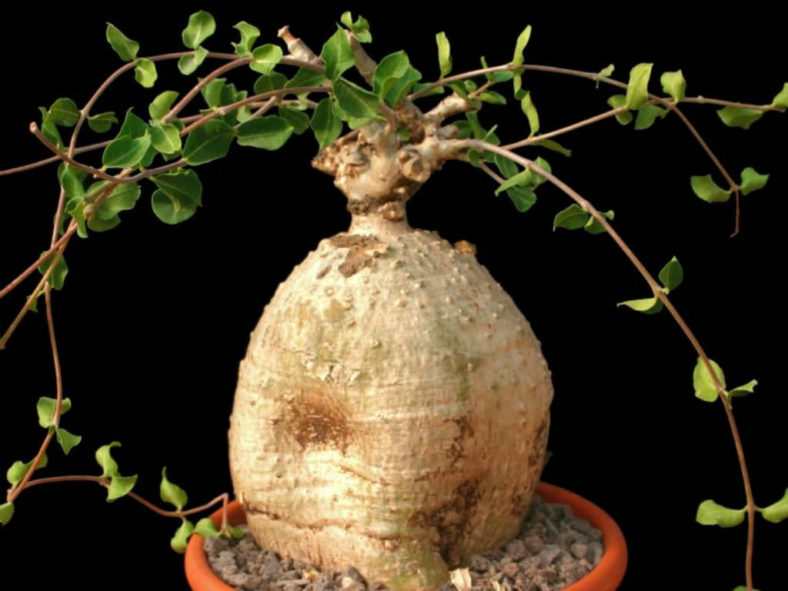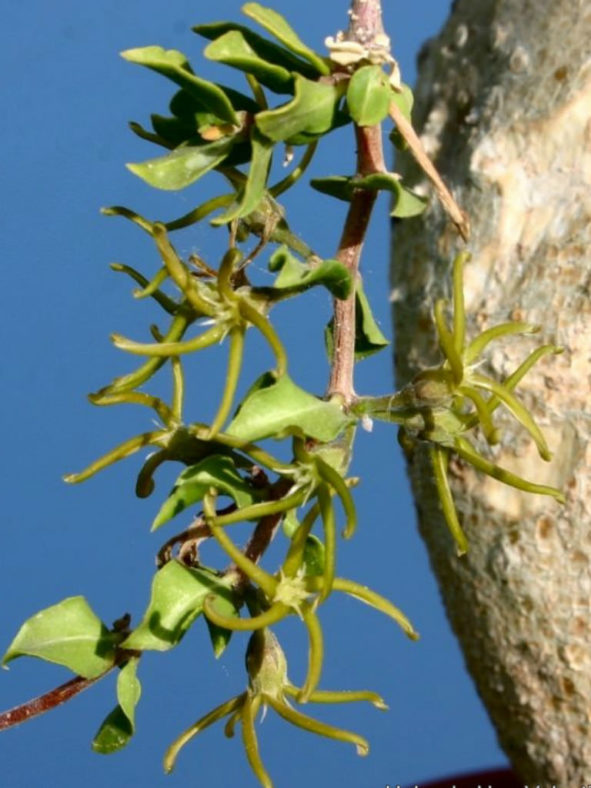Scientific Name
Fockea edulis K.Schum.
Common Name(s)
Hottentot Bread
Synonym(s)
Brachystelma macrorrhizum, Chymocormus edulis, Fockea cylindrica, Fockea glabra, Pergularia edulis
Scientific Classification
Family: Apocynaceae
Subfamily: Asclepiadoideae
Tribe: Fockeeae
Genus: Fockea
Etymology
The specific epithet "edulis" (pronounced ED-yew-liss) means "edible" and refers to the fleshy roots used for food and moisture in dry parts of Southern Africa.
The word "Hottentot" in the common name was first recorded in the late 17th century, referring to the Khoikhoi, a group of Khoisan-speaking pastoral peoples of South Africa and Namibia. It is now regarded as too derogatory and offensive to be used in an ethnic sense. The only acceptable modern use for "Hottentot" is in the common names of plants and animals.
Origin
Fockea edulis is native to South Africa and Namibia.
Description
Fockea edulis is a caudiciform plant with twisted tuberous roots and thin branches that climb on any available support. The tuber is gray with wart-like tubercules and can reach a diameter of 2 feet (60 cm). The branches can grow up to 13.1 feet (4 m) long. The leaves are green and oval, measuring up to 1 inch (2.5 cm) long. The plant will lose some leaves in winter but rarely goes completely leafless.
The flowers are whitish-green and usually appear in the summer. They can reach a diameter of 0.6 inches (1.5 cm). This plant is dioecious, which means it has male and female flowers on separate specimens. It produces grey-green seed pods on pollinated female plants.

How to Grow and Care for Fockea edulis
Light: These plants prefer partial shade. They can tolerate full sun but need a little sun protection during the hottest part of the day.
Soil: A fast-draining soil mix is the best soil for your Fockea to drain excess water.
Hardiness: Fockea edulis can withstand temperatures as low as 25 to 50 °F (-3.9 to 10 °C), USDA hardiness zones 9b to 11b.
Watering: During the growing season, from spring to fall, water regularly and allow the soil to dry between waterings. Reduce watering in the winter. Water it only enough to prevent the shriveling of the tuber.
Fertilizing: To force tuber growth, feed with high-nitrogen fertilizer with a lower potassium level only during the growing season.
Propagation: Fockea plants are relatively easy to grow from seeds. They are dioecious, so both male and female plants are needed to produce seeds. Vegetative propagation is difficult to impossible.
Learn more at How to Grow and Care for Fockea.
Toxicity of Fockea edulis
Fockeas are known as food plants, but the tuber has milky sap, which is said to be poisonous. Avoid contact with skin or eyes, and keep away from children and pets.
Forms of Fockea edulis
Links
- Back to genus Fockea
- Succupedia: Browse succulents by Scientific Name, Common Name, Genus, Family, USDA Hardiness Zone, Origin, or cacti by Genus
Photo Gallery
Click on a photo to see a larger version.


